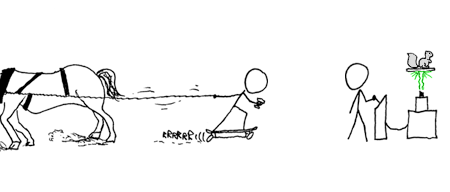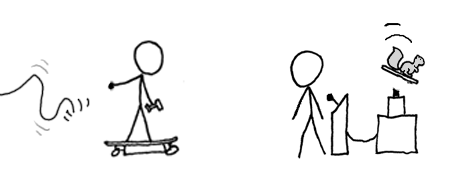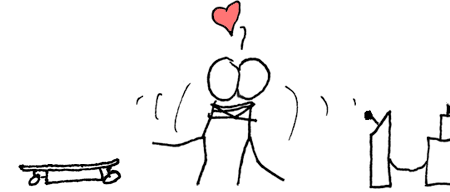However this is your gun, and I'm assuming you'd rather not use the latest technology to make it accurate, so it is perfectly understandable if you want to base it off of 1800's technology.judgment_arms being educated by Mobile Chernobyl wrote: Mobile Chernobyl, I’ve read those reviews and found one thing in common: they were all based off paintball gun platforms, as such they had short barrels (12-14 inches) and accelerated the paintball far to fast, never mined the fact that the naked paintball couldn’t have engaged the rifling to well, other wise it would have burst.
14" or 48" there both leaving the barrel at 300 fps. Yes the impulse time is different, but considering the inertia of the fluid inside, your going to need a little bit longer impulse than even your talking about to achieve a spinning effect similar to that of a bullet.
I have already made a prototype paintball rifle that had a bore rifled to 1-in-102 and about 18.5 inches long, according to the GGDT it ws shooting at 302fps and I saw a slight long range improvement in accuracy over my stock Tippann 98c.
I hope your not comparing accuracy to that of a stock tippman barrel? For your sake, I will assume you were conducting your rifled barrel accuracy test compared to that of a proper multi bore paintball barrel kit, properly matched to the size of your paintball, with humidity being a concern and NOT your stock tippman barrel. If this is not the case, lol.
My original plan was HPLV with a slow opening, small bore, valve that essentially allowed the compressed gas to “push” the paintball up to 300fps, rather than hammer it out the bore like a faster valve would. Also, need I remind you of Rifled Musket?
Need i remind you that "rifled musket" technology is prevalent to the early 1800's and the current year is 2008?
No offence sir, but that line is a load of manure, unless of course the round ball used in Hawken, Kentucky, Pennsylvania, and plains rifles were not round… nope, just reached into my hunting pouch, they’re round.In general, if its round, smooth bore, if its oblong and doesnt have stabilizing assistance, rifled bore.
One thing you seem to keep neglecting is the fact that the amunition used in these super high tech 1800's "rifles" were patched SOLID balls. Paintballs are not SOLID and therefore there WILL be a difference in their ballistics, and even if you do patch them, it still doesnt change the fact they're filled with a liquid and since it is liquid in a sphere, the fluid will have different angular velocitys relative to the center, and you may get a slinky effect where the speed of the outermost fluid accelerates first because of the friction with the casing, then transferring the rotation to the inner fluid mid flight. This is the least of your worrys tho, and what will most likely happen as you increase rifling per given length is you will cause the paintball to expand radially along the z-axis (axis from barrel to target) This effect is used purposely on solid bullets, causing them to expand and grab into the rifling of the inner barrel walls. Unfortunatly for your soft, gelatin walled paintball, this fluid pushing out radialling from the z-axis on the gelatin walls will cause it to expand and further more increase it's drag coefficient. This is of course IF you can even cause the fluid to spin, with the short impulse it will see vs the intertia of its inner fluid. If you really wanna "snipe" with paintballs go put an 18" Snyper barrel on your tippy and call it a day.
I’m using spiral rifling, I have heard of linear rifling, personally I don’t think it’s worth it.
When talking about paintballs aka liquid filled spheres I agree, rifling is not worth it no matter what kind. With paintballs you are dealing with both aerodynamics AND fluid dynamics - this is not so with solid lead ballzz. Your best bet is the best quality paintball, with the smoothest exterior, so IF it does spin, it does not have anything to "grab" the air (think slicing in golf and high/low pressures created with a dimpled golfball to create spin), fit into a barrel that it fits precisely within .001" for appx 1/3-1/2 of the overall initial length. Hmm this all sounds very familiar, oh yea thats right, its ALREADY been researched and developed thoroughly in the paintball industry. You can e-argue about paintball ballistics all you want, but unless you conduct some seriously thorough tests with ALL variables taken into respect and regulated, your arguement holds no ground to what is currently held as "true".
If your actually going to play scenario games or w/e with this, i would just work on creating a 1in14 barrel that threads to a quality cheap gun like a used SP Ion. It will work more reliably, consistantly and give you a higher ROF than anything based on "spudgun" tech.
Ragnarok - "Of course, you don't need my complex explanation to reach this conclusion. Just ask yourself, if you couldn't successfully spin a paintball, why would paintball guns deliberately try to achieve back spin?
If it had no effect, then the companies wouldn't waste resources on it."
You're referring to two different ballistic properties here.
"Backspin" is an aerodynamical effect where the backspin causes lift to alter the trajectory of the ball. And the "companies" do this far differently than rifling. they use a curved barrel, which works far differently than a rifled barrel to achieve spin.
"Rifling" is a gyroscopical effect used on cylindrical objects to create spin along the z-axis for ballance in flight. This is not required for a round object as there is even distribution of density radially from the Cog, not so with a normal cylindrical bullet.
This argument is stupid and if you believe round objects require rifling to produce spin and therefore become more accurate, then news for u the world is not flat. A little research tells me that rifling was created for a different reason with round balls. originally rifling was created, and called soot grooves, it would allow the soot to be pushed out of the barrel after every shot, minimizing the build up of soot (since BP quality back then was not always consistant and/or the best, and caused higher amounts of soot and residue to be left after each shot that would normally have to be removed by means of a cleaning rod), and consequently, improving accuracy with this "round balls", and not PRB. the problem then later arose with more aggressive rifling on round lead balls leading to deformation of the shape, not in a good way. This effect was later taken advatage with and used in the minie ball design, one of the first non spherical designs that was designed to purposely expand from the shooting pressures and expand radially to catch the rifling grooves and cause the gyroscopical miracle of rifling. rifling allowed the slightly cylindrical/not spherical object to true itself in flight, and not tumble in the x or y axis, sort of like an arrow. I'm sure you know the rest, but basically, the paintball is not ment to be an accurate ballistic body. The airgun version of this does not need "Soot grooves" because, hopefully your gun is not creating any soot! The paintball is ment to be fired in quantity rather than quality around 100 yards or less and to spread a paint like substance upon impact. originally it was used to mark trees for cutting. I'm done









